3,3'-DIETHYLTHIADICARBOCYANINE IODIDE
Synonym(s):3-Ethyl-2-[5-(3-ethyl-2(3H)-benzothiazolylidene)-1,3-pentadienyl]benzothiazolium iodide;DiSC2(5);DTDCI
- CAS NO.:514-73-8
- Empirical Formula: C23H23IN2S2
- Molecular Weight: 518.48
- MDL number: MFCD00074829
- EINECS: 208-186-7
- SAFETY DATA SHEET (SDS)
- Update Date: 2025-12-15 16:23:17

What is 3,3'-DIETHYLTHIADICARBOCYANINE IODIDE?
Description
Dithiazanine iodide is a green, needle-likecrystalline solid which decomposes at 248℃. Sulfur-likeodor. Molecular weight= 519.51. Melting point 5 225℃;Hazard Identification (based on NFPA-704 M RatingSystem): Health 3, Flammability 0, Reactivity 1. Insolublein water.
Chemical properties
green crystalline powder
Originator
Delvex,Lilly,US,1958
The Uses of 3,3'-DIETHYLTHIADICARBOCYANINE IODIDE
Sensitizer for photographic emulsions.
The Uses of 3,3'-DIETHYLTHIADICARBOCYANINE IODIDE
It is employed as a solvent soluble laser dye. DTDCi is used as fluorescent contrast agent in three-dimensional fluorescence lifetime tomography and as a dye for rapid genetic screening. It is a potential sensitive probe useful for fluorometric analysis of transferable membrane pores and effects of membrane potential on Na cotransports in eel intestinal brush-border membrane vesicles.
The Uses of 3,3'-DIETHYLTHIADICARBOCYANINE IODIDE
DTDCi is used as;
- Fluorescent contrast agent in three-dimensional fluorescence lifetime tomography.
- Dye for rapid genetic screening.
Manufacturing Process
3.05 g of 1-methylbenzthiazole ethiodide, 1.11 g of β-ethyl thio acrolein diethyl acetal and 15 cc of pyridine were mixed and boiled gently under reflux for 15 minutes. The reaction mixture was then poured into an aqueous solution of potassium iodide. The dye was precipitated and was filtered off, and washed with ethyl alcohol and ether. Recrystallization from methyl alcohol solution yielded the dye as green needles. Melting point 248°C with decomposition.
brand name
Abminthic;Anguifugan;D.i.m.;Deselmine;Dilombrine;Dithiazine (dye);Dizan;Eastman 7663;Elmizin;Nekel;Omni-passin;Ossiurene;Telmicid;Telmide.
Therapeutic Function
Anthelmintic
World Health Organization (WHO)
Dithiazanine iodide, an anthelminthic, was introduced in 1959 for the treatment of strongyloid worms and whipworms. Between 1961 and 1964 its use was associated with eight fatal cases of severe acidosis and shock. Although the drug is not significantly absorbed from the gut, in normal circumstances it was assumed that these fatalities were due to atypically high uptake from inflamed intestinal mucosa. Dithiazanine iodide has been superseded by safer and more effective drugs; however, it may remain available in some countries.
General Description
Green, needle-like crystals. Used as a veterinary anthelmintic, as a sensitizer for photographic emulsions and as an insecticides. Not registered as a pesticide in the U.S.
Reactivity Profile
An amine, organosulfide. Organosulfides are incompatible with acids, diazo and azo compounds, halocarbons, isocyanates, aldehydes, alkali metals, nitrides, hydrides, and other strong reducing agents. Reactions with these materials generate heat and in many cases hydrogen gas. Many of these compounds may liberate hydrogen sulfide upon decomposition or reaction with an acid. Amines are chemical bases. They neutralize acids to form salts plus water. These acid-base reactions are exothermic. The amount of heat that is evolved per mole of amine in a neutralization is largely independent of the strength of the amine as a base. Amines may be incompatible with isocyanates, halogenated organics, peroxides, phenols (acidic), epoxides, anhydrides, and acid halides. Flammable gaseous hydrogen is generated by amines in combination with strong reducing agents, such as hydrides.
Health Hazard
Highly toxic by mouth. (Non-Specific -- Pesticide, Solid, n.o.s.) Poisonous if swallowed, or if dust is inhaled.
Fire Hazard
When heated to decomposition, 3,3'-DIETHYLTHIADICARBOCYANINE IODIDE emits toxic fumes of iodine, sulfur oxides, and nitrogen oxides.
Safety Profile
Poison by ingestion, intraperitoneal, and intravenous routes. When heated to decomposition it emits very toxic fumes of I-, SOx, and NOx. See also IODIDES.
Potential Exposure
This material is used as a plasticizer,as a rubber accelerator; and as an intermediate inmanufacturing of pesticides
First aid
If this chemical gets into the eyes, remove anycontact lenses at once and irrigate immediately for at least15 min, occasionally lifting upper and lower lids. Seek medical attention immediately. If this chemical contacts theskin, remove contaminated clothing and wash immediatelywith soap and water. Seek medical attention immediately. Ifthis chemical has been inhaled, remove from exposure,begin rescue breathing (using universal precautions, including resuscitation mask) if breathing has stopped and CPR ifheart action has stopped. Transfer promptly to a medicalfacility. When this chemical has been swallowed, get medical attention. Give large quantities of water and inducevomiting. Do not make an unconscious person vomit.
Storage
Color Code—Blue: Health Hazard/Poison: Storein a secure poison location. Prior to working with thischemical you should be trained on its proper handling andstorage. Store in tightly closed containers in a cool, wellventilated area.
Shipping
Pesticides, solid, toxic, n.o.s. have a labelrequirement of “POISONOUS/TOXIC MATERIALS.”They fall in Hazard Class 6.1 and this material in PackingGroup II.
Incompatibilities
Stable under normal conditions of temperature and pressure. Keep away from alkalies, strongoxidizers.
Properties of 3,3'-DIETHYLTHIADICARBOCYANINE IODIDE
| Melting point: | 249 °C (dec.) (lit.) |
| storage temp. | Keep in dark place,Sealed in dry,Room Temperature |
| solubility | Soluble in methanol |
| form | Powder |
| color | Green |
| Merck | 14,3369 |
| BRN | 3838938 |
| EPA Substance Registry System | Dithiazanine iodide (514-73-8) |
Safety information for 3,3'-DIETHYLTHIADICARBOCYANINE IODIDE
| Signal word | Danger |
| Pictogram(s) |
 Skull and Crossbones Acute Toxicity GHS06 |
| GHS Hazard Statements |
H300:Acute toxicity,oral H315:Skin corrosion/irritation H319:Serious eye damage/eye irritation H335:Specific target organ toxicity, single exposure;Respiratory tract irritation |
| Precautionary Statement Codes |
P261:Avoid breathing dust/fume/gas/mist/vapours/spray. P264:Wash hands thoroughly after handling. P264:Wash skin thouroughly after handling. P270:Do not eat, drink or smoke when using this product. P301+P310:IF SWALLOWED: Immediately call a POISON CENTER or doctor/physician. P302+P352:IF ON SKIN: wash with plenty of soap and water. P305+P351+P338:IF IN EYES: Rinse cautiously with water for several minutes. Remove contact lenses, if present and easy to do. Continuerinsing. |
Computed Descriptors for 3,3'-DIETHYLTHIADICARBOCYANINE IODIDE
New Products
Indole Methyl Resin tert-butyl 9-methoxy-3-azaspiro[5.5]undecane-3-carboxylate Boc-His(Boc)-OH 2-CTC Resin 4-Chloro-7-tosy1-7Hpyrrolo[2,3-d]pyrimidine 5,7-Dibromo-1H-indole 2,5-dichloro-N-hydroxy-4,6-dimethylpyridine-3-carboximidamide 2,2-Dimethoxy-7-azaspiro[3.5]nonane hydrochloride 4-chloromethyl-5-methyl-1,3-dioxol-2-one (DMDO-Cl) R-2-BENZYLOXY PROPIONIC ACID 1,1’-CARBONYLDIIMIDAZOLE 1,1’-CARBONYLDI (1,2-4 TRIAZOLE) N-METHYL INDAZOLE-3-CARBOXYLIC ACID 4-((2-hydroxyethyl)thio)benzoic acid 1-(TERT-BUTOXYCARBONYL)-2-PYRROLIDINONE Methyl 6-methylnicotinate 3-Pyridineacrylic acid tert-Butyl carbazate TETRAHYDRO-2H-PYRAN-3-OL 2-((4-morpholinophenylamino) (methylthio) methylene) malononitrile 3-(4-morpholinophenylamino)-5-amino-1H-pyrazole-4-carbonitrile 2,4-dihydroxybenzaldehyde 1,3-Diethyl-1,3-Diphenylurea Methyl 2-methylquinoline-6-carboxylateRelated products of tetrahydrofuran
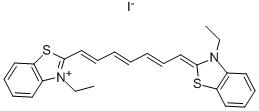
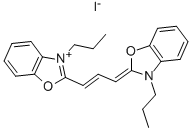
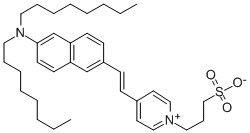
![3-PENTYL-2-((1E,3E)-5-[3-PENTYL-1,3-BENZOXAZOL-2(3H)-YLIDENE]-1,3-PENTADIENYL)-1,3-BENZOXAZOL-3-IUM IODIDE](https://img.chemicalbook.in/CAS/GIF/53213-92-6.gif)
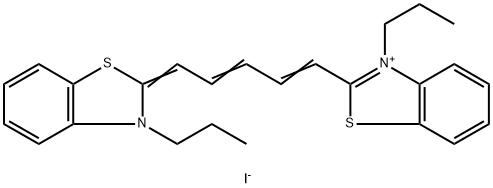
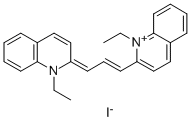
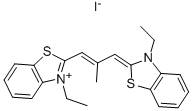
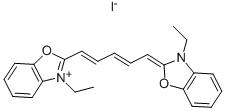
You may like
-
 3,3'-Diethylthiadicarbocyanine iodide CAS 514-73-8View Details
3,3'-Diethylthiadicarbocyanine iodide CAS 514-73-8View Details
514-73-8 -
 3,3'-Diethylthiadicarbocyanine iodide CAS 514-73-8View Details
3,3'-Diethylthiadicarbocyanine iodide CAS 514-73-8View Details
514-73-8 -
 3,3'-Diethylthiadicarbocyanine iodide CAS 514-73-8View Details
3,3'-Diethylthiadicarbocyanine iodide CAS 514-73-8View Details
514-73-8 -
 3,3′-Diethylthiadicarbocyanine iodide CAS 514-73-8View Details
3,3′-Diethylthiadicarbocyanine iodide CAS 514-73-8View Details
514-73-8 -
 Pyridine 99.5% HPLC /UV SpectroscopyView Details
Pyridine 99.5% HPLC /UV SpectroscopyView Details
110-86-1 -
 Dibutyl PhthalateView Details
Dibutyl PhthalateView Details
84-74-2 -
 Imidazole Spot supply, competitive priceView Details
Imidazole Spot supply, competitive priceView Details
288-32-4 -
 Thiourea 99% ARView Details
Thiourea 99% ARView Details
62-56-6
